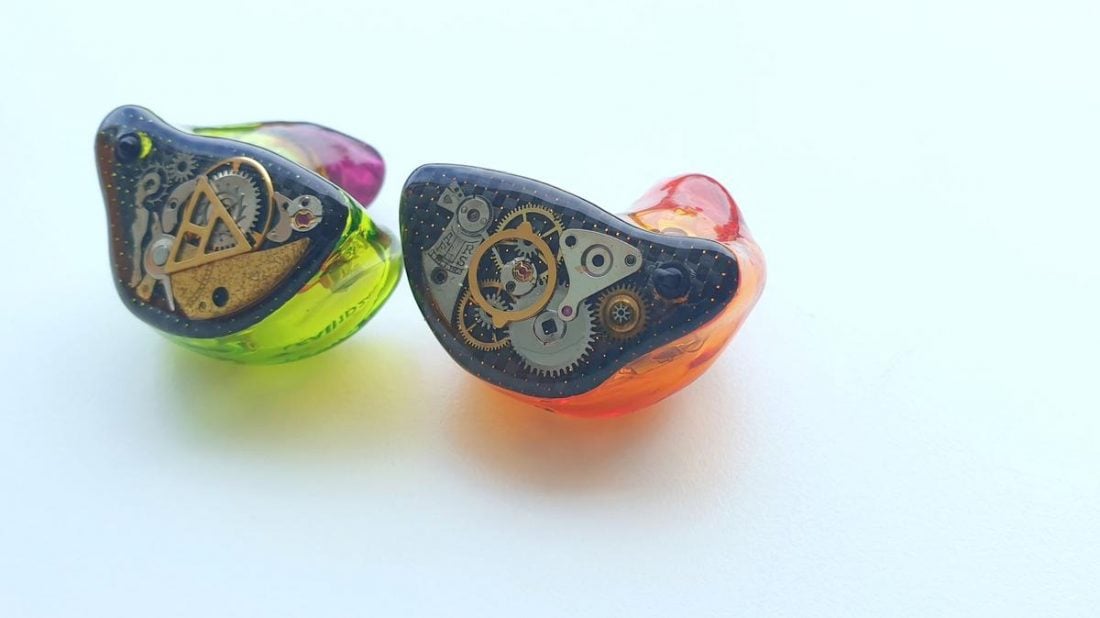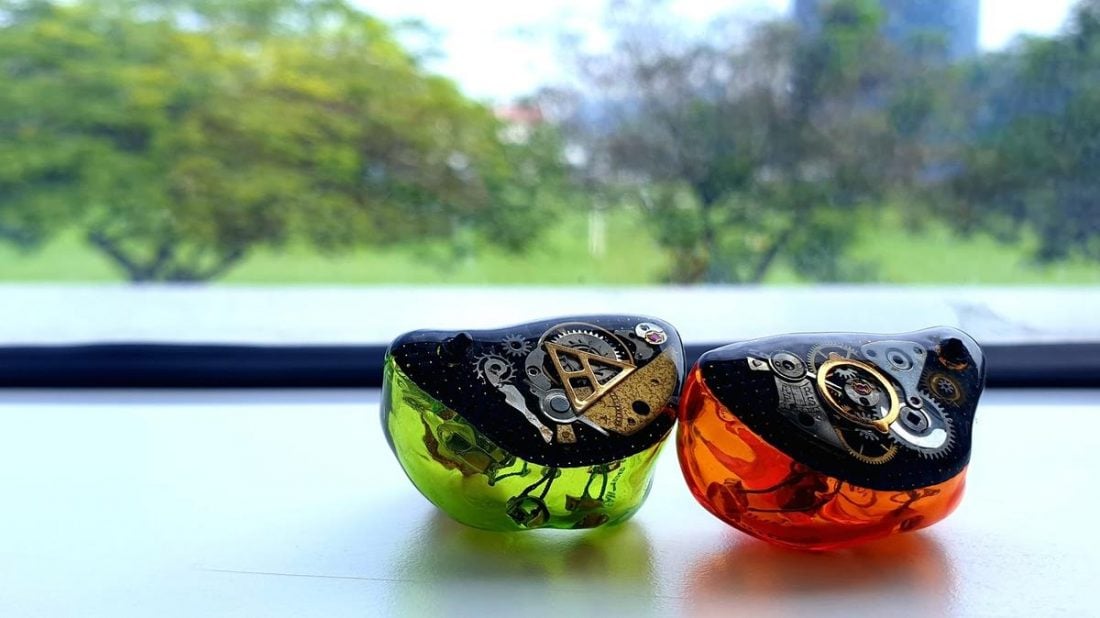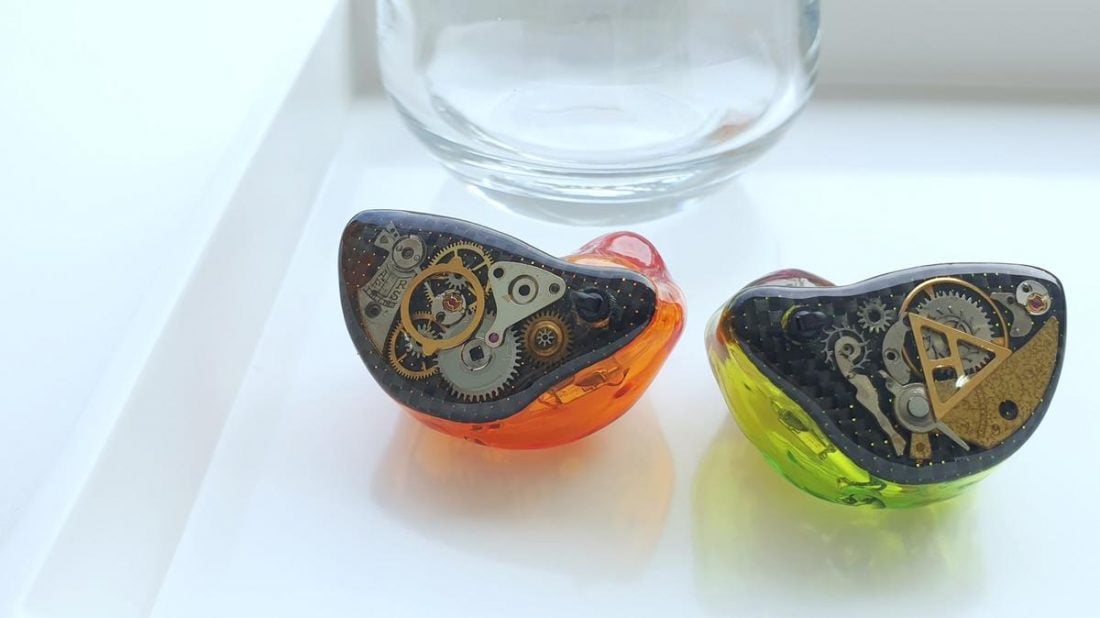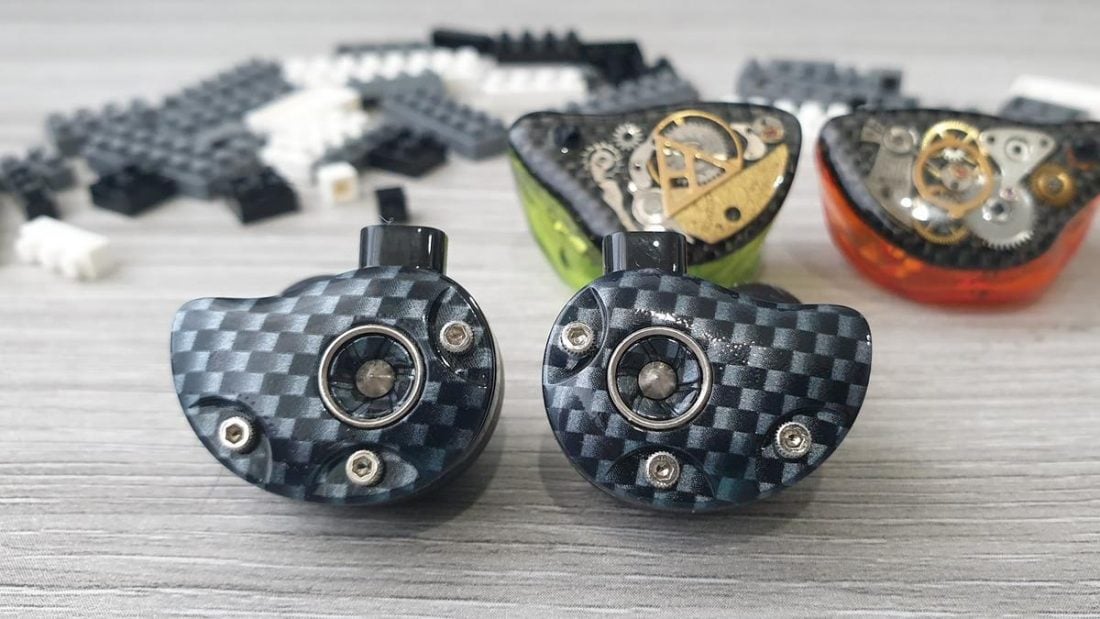Life is short. The year 2020 has been, to quote the ever-eloquent Biff Tannen, “flushed completely down the toilet”. And as the nightmare year draws to a close, 2021 promises more of the same, uh, crap. To reiterate, life is short, so treat yourself. Get those headphones, IEMs, DAPs and cables you’ve always wanted, and don’t settle for less. The doctrine of YOLO demands it lol. Last year I had the pleasure of reviewing Lime Ears’ Model X. It had a brilliant tuning at an accessible price point, but was also, at the time, the second fiddle in their lineup, behind the Aether R which I so heavily coveted. So in moving up, I say goodbye to Sir Lancelot, Dr Watson, Sideshow Bob and Starscream. the doctrine dictates that I have a taste of the throne!
Foiled, Yet Again!
Today we look at Aether R, the former flagship in Lime Ears’ lineup. Former? At the time of writing, the brand new Pneuma has taken over as the top dog in the roster, effectively rendering the above argument entirely null. Alas, ‘tis but a sidegrade! The iron throne is still beyond my grasp, but that doesn’t mean we can’t have some fun along the way eh? Aether R is the successor to the original, now-discontinued Aether, their inaugural flagship. With six BAs a side, four-way passive crossover and a host of in-house technologies, the R hopes to surpass the accomplishments of the former. The flexible bass switch makes a return, giving two signatures for the price of one (albeit a pricey one), and is arguably Lime Ears’ calling card by now.
Where To Buy
The Aether R is available in universal or custom form. Both have their ups and downs. For universal, you can fine-tune the sound to your liking via ear tips, whereas for custom, you get the best possible fit and comfort. Prices start from €1200 (~USD$1400), and you can buy them from Lime Ears direct, or via their network of dealers. I’d like to extend my sincere thanks to founder Emil Stolecki for the discounted review unit.
Equipment Used:
DAP IEMs Albums
Technical Specifications
Driver: 6x BAs Configuration: 2x sub-bass, 2x lows, 1x mids, 1x highs Crossover: 4-way passive hybrid crossover Switchable low-end characteristics VariBore technology TrueSub technology Cable Connectors: 0.78mm 2-pin Plug: 3.5mm
Packaging and Accessories
If you’ve been on the fence to get Aether R in either custom or universal form, perhaps this section is the difference maker. The universal version comes in a luxurious, indulgent packaging with a complete accessory set. It’s so high end, you will want for nothing. You’ll be the envy of friends who rightly assume you paid top dollar for bragging rights. “Imported from Poland”, you say to a chorus of oohs and aahs. That pristine accessory set was meticulously covered in the Model X review, and I sort of miss the extravagance. Because here, in front of me, is the custom Aether R set in its entirety, and I struggle to think of other words besides sparse, basic, and lacking. You get the barest essentials, that is a Pelican 1015 case, Plastics One cable, cleaning tool and a desiccant. No presentation box, no aluminium case, no Polish candy!
Party Pooper
It’s a jarring case of prince and the pauper (or pooper) and I may be petty. Certainly, one can argue that custom IEMs are geared towards musicians and audio professionals, but at this price range, expectations are sky high, and something as meagre as presentation can make or break a brand. Lime Ears progressed leaps and bounds in their universal IEMs, perhaps more attention should be paid towards their customs as well. Please, sir, I want some more.
Design and Build Quality
Lime Ears has an eye on the cosmos. Ok not quite, but the raw ambition is there. The Switch: Controls the bass region below 100Hz. The bass level can be increased in low-volume listening or noisy environments (or when you simply crave the boom-boom); and decreased when negotiating poorly-mastered tracks for a cleaner sound. VariBore: Sound bores of varying diameters are used for each frequency band to accentuate their strengths. Lower and middle frequencies utilize a 1mm bore diameter, while high frequencies use a wider 2mm bore for an open and smooth treble response. TrueSub: The lowest frequencies in Aether are dampened with a custom-designed, 3D-printed filter. This acoustic filter commands a powerful subwoofer-like quality, while remaining clear, textured and dynamic.
Bespoke, She Wrote
Aether R won’t be a custom IEM without a host of customizable choices. Lime Ears’ designer page comes with a full suite of options to alter the faceplates, shells and logos to your liking. You can indulge in exotic materials like carbon fiber, wood, watch parts and rhinestones at additional cost. Fluff, yes, but handsome fluff. If the options seem overwhelming, they have ready-made, head-turning signature designs that showcase the best of what they can do.
Dazzle and Sizzle
Build quality is expectedly excellent, given Lime Ears’ years of grizzled expertise. The acrylic shells are solid with no defects or bubbling in sight, while the carbon fiber faceplates glimmer from different viewing angles. The switches, located at the bottom of each faceplate, are well-embedded and don’t wiggle in place. Go on, twitch that switch to your heart’s content. The earpieces are smooth, seamless and lightweight. They might appear durable, but are essentially plastic shells housing a bunch of wires and drivers, kind of like a rib cage protecting the vital organs. Or an egg, if you’re feeling morbid. Be aware of the laws of physics and don’t strain your earpieces. They are particularly vulnerable to falls and crush pressure, so protect them in a case at all times when not in use.
Fit, Comfort and Isolation
Like audiophile Spider-Man says, “With great build quality comes great fit”. The size of Aether R’s earpieces are moderate as far as multi-driver custom IEMs go, but I’m most impressed with how they fit. They aren’t small and slippery like Empire Ears Legend X, nor large and intrusive like Hidition Violet, occupying the narrow middle ground between comfort and heft. The nozzle length is perfect too, not long and invasive, nor short and stumpy.
Spider-Sense
Why are these important? Audiophile Spider-Man continues, “With great fit comes great comfort”, and Aether R just about occupies the top spot in this aspect. They slid into my ear canals without effort, and stayed in place even when I’m talking, chewing or grinning widely. They never broke seal throughout, providing an uncompromised bass response. All this in their first try, without any need for refits. Isolation is exemplary as well, being fully-sealed earpieces without vents. I’m able to block out 90% of environmental noise, including air-conditioning hums, fan whooshes, and the odd annoying voice telling me to get off the road. Nobody tells me what to do.
Sound Quality
I’m as superficial as they come, and as flawless as the Aether R is on the outside, it’s what’s inside that counts. Let’s dissect the sound.
Overall Sound Signature
A top-of-the-line (TOTL) product carries with it heightened expectations, whims and fancies from eager listeners. You’re not going to get away with just sounding good, you need a defining characteristic that identifies and builds the brand. Feel the pressure yet? The original Aether had many fans owing to its superb bass and treble response coupled with a fun, airy, and ethereal (hence, Aether) signature.
Judgment Day
Aether R, faced with the burden of the sequel, aims to please everyone with switchable signatures, a smooth, timbre-accurate sound, while preserving the former’s treble response and airiness. It’s everything and the kitchen sink. So did we get a Terminator 2 or Highlander 2? Sadly, it’s more of the latter. In its eagerness to be everything at once, Aether R struggles to forge an identity of its own, and ends up sounding like a vanilla TOTL. That isn’t to say it’s a complete trainwreck. Aether R has many redeeming features. It still boasts a pleasing neutral-warm signature, leaning towards naturalness with a slight gooey intimacy. Smooth, musical flow is emphasized over outright detail and resolution, and it’s very easy to sink into the music. You just have that sinking (sic) feeling that, it’s all been done before by others.
Listening Conditions
Critical listening was done after 100 hours of burn-in, while I admire the Aether R’s aesthetic qualities yet again. It’s quite an ego boost knowing these IEMs fit only me and not the other 7 billion people worldwide. After burn-in the sound remained much the same. The main review setup is FiiO’s M15 player with the included Plastics One cable.
Bass
The bass forms the warm, lush centre of Aether R, providing much of the signature’s body and smoothness, like good chicken broth. Powered by four BA drivers, the bass paints a vivid picture, with amazing details and textures throughout. I am able to savor each note and every layer, and although the decay is a bit too swift for my liking, the stage is rendered crisp and clean. Sub-bass extension is very good, while slam and impact are just decent. The bass lacks the rumble and authenticity of dynamic drivers, especially in the lowest registers. So to compensate, the notes are slightly thickened and rounded to create the impression of warmth, especially in the midbass area. The best part is, even with all this going on, resolution remains high, and you won’t miss out on any richly-layered, bottom-heavy passages.
Berzerker Mode
Feel like a bit more punch? Turn the bass switch on to enhance the midbass and upper bass, filling up the air and space between the notes. The signature becomes warmer, but the transition to mids is still surprisingly clean. However, the adage too much of a good thing applies here. Clarity is affected, and the congestion within the bass hampers positioning and layering. It gets too busy, and I much prefer the switch off for most instances. All in all, the bass is a solid performer with attention to details and fullness, but lacks the naturalness and slam to really get things going.
Mids
I’m reminded of a riddle in my youth, “what’s high in the middle and round on both ends?” The traditional answer is Ohio, but the same could be argued for Aether R’s mids response. Bookmarked by dips in the lower and upper mids, while bringing forward the central mids, the tuning is as unique as they come. The central mids have resolution heightened and brought forward positionally, closer to the listener so you can appreciate the finer details and lovely texture caressing your ears. The rounded, subdued lower and upper mids serve to smoothen the signature, lending a healthy dose of warmth to further Aether R’s organic, natural-sounding agenda.
The Middling Malady
Put together though, is a tone that I don’t find agreeable. The mids start off smooth, full and warm, but drop abruptly, nearly cliff-like, with a hastened decay, in the name of recreating the airy magic of the original Aether. The end result is hollow-sounding and even soulless, despite the apparent fullness of the notes. This is especially obvious in vocals, and it’s such a pity. The mids sound nice and inoffensive initially, with a good balance of tone and detail. But even with months of listening, I could not, for the life of me figure out why the forwardly-placed mids – often a shortcut to captivate the listener – failed to engage or move me. Much later, with further listening and comparisons, the mids finally unraveled. Like a shiny exterior hiding a deep, dark, decades-long secret, it’s bad news.
Treble
It gets better, I promise. Keep calm and carry on, for there’s a silver lining behind every cloud. The cliché-a-thon has ended, so let me start by spilling the deets about the treble before you splash the cash. Thanks to the muted upper mids, the lower treble continues in similar fashion, for better or worse. If your ears are sensitive, it’s time to rejoice, because the buttery treble is smooth sailing and fatigue-free. But if you’re a treble-head like me, you can’t help but feel shortchanged, because it lacks energy despite being tonally-accurate and pleasing for the most part. Cymbals and hi-hats impart an excellent note body, finished with just a dollop of shimmer. It’s not enough to make you abandon what you’re doing and surrender to the music, but the treble is adequately pleasant in a safe, elevator-music kind of way.
Head in the Clouds
The silver lining I talked about was hiding in the mid-treble. Characterized by a sudden peak in that region, extra air and spice is added to the signature. And dare I say it, a hint of sparkle. At the very least, it doesn’t sound boring now. What’s even better, treble extension and clarity are at a commendable level, without the danger of stiff peaks when you whisk the treble for too long. What, I can’t use a baking analogy?
Soundstage and Imaging
Reviewers, me included, often equate the soundstage with the sun, the stars, the moonlit sky or other faffery. All you really want to know is whether you feel the performers’ energy, emotion and flecks of sweat, possibly. The good news is, Aether R’s stage puts you in the front seat in terms of size and engagement factor. The width is quite impressive and worthy of flagship status, while stage depth is close behind, although affected by the mid-forwardness. Imaging and separation are serviceable on the whole, with a lively, natural head-stage helped by accurate positional cues. Left-to-right separation is superb, but interestingly there is some congestion in the centre imaging, probably due to some note stretching in the bass and mids. I heard this in Fleetwood Mac’s “The Chain”, where music came from far left, far right, and mostly centre, instead of being evenly dispersed around the head.
Comparisons
Stealth Sonics U9 JDM
The U9 possesses finer detail levels at both ends, bringing cannon-like sub-bass power coupled with pristine, crispy highs. It delivers all the energy Aether R isn’t capable of, along with a big, ballsy sound that’s all-in on engagement. Instruments sound bigger and meatier when played through the U9, along with gobs of dynamism and flair. Can you say histrionic tendencies?
Type A Personality
With that said, a few might not be able to stand the U9’s, how shall we say, extroverted and confrontative stance. For those times, the serenity and affability of Aether R seems a more sensible choice. With a relaxed, spacious and smooth presentation, the Aether R provides a spa-like listening sensation, and even manages to have a slightly better timbre than U9. As lovely as it sounds, Aether R’s strongest characteristic might just be the deal-breaker, because a warm/natural/smooth tuning is exceedingly common and available for cheaper. Compared side by side, U9 is the more unique and technically accomplished IEM, while Aether R likes to play it safe and steady.
Vision Ears VE8
Meet the yardstick, the ender of worlds. For all intents and purposes, Aether R is earmarked as an all-rounder, adept in most genres. But mention “flagship-class all-rounder” and the eminent VE8 – one of my all-time favorites – should never be ignored. Although twice as expensive, VE8 shares two similarities with Aether R, that is the neutral-warm signature and a mid-treble peak. VE8’s pièce de résistance is being able to convey warmth and clarity in equal measure, and on a grand, cinematic scale. The presentation is vibrant and immersive, putting you onstage with the musicians. It has muscular, full-bodied notes across the spectrum, like a soul injection for voices and instruments. In terms of musicality and pure, unadulterated pleasure, VE8 is peerless.
Contender/Pretender
The Aether R sounds brilliant on first listen, but only when compared to VE8’s greatness does the cracks show. The notes are more brittle, although you can argue that it’s airier and more ethereal. But sometimes air doesn’t pay the bills – realism does – and the hollower character of the voices and instruments tend to sound distant and uninvolved. Resolution isn’t as high on the Aether R, showing up in pockets of deficiencies. Compared to VE8, there is less extension, sluggish midbass, intimate soundstage, and muddled centre imaging. Although a very capable IEM in its own right, Aether R is clearly a tier below. It wasn’t a fair fight from the start, but you have to know how high this sound quality mountain can go, particularly when you’re shopping at stratospheric prices.
Final Words
In mathematics and science, to solve complex problems precisely and repeatedly, you need a formula. In the real world, not so much. Without quantifiable units, you rely on luck, or worse, the X-factor. That’s why even with a big budget, special effects, an intriguing premise, tons of hype, dinosaurs, and friggin’ Steven Speilberg attached, Terra Nova was a failed TV series. Lime Ears’ Aether R was conceived with the best intentions, based on a simple formula. Retain what made the original so captivating, correct its deficiencies, and give it an accessible, people-pleasing tuning. It succeeds for the most part, but without a unique selling point other than the switch, struggles to stay afloat amongst the competition. A good tuning simply won’t suffice nowadays. There is much to learn, yet much to celebrate. As evidenced by the luxurious build quality, class-defining fit and comfort, value-for-money proposition (for flagships anyway), and robust R&D division, these are perfect starting points for the spectacular next big thing. The future is neon-bright, and I am eagerly awaiting Lime Ears’ next release to prove me right.











